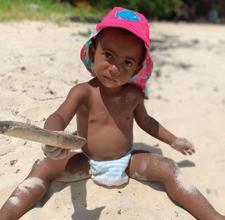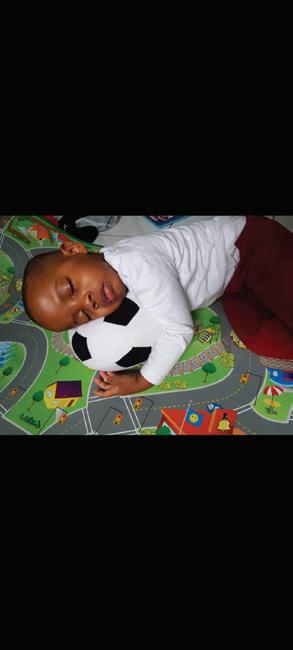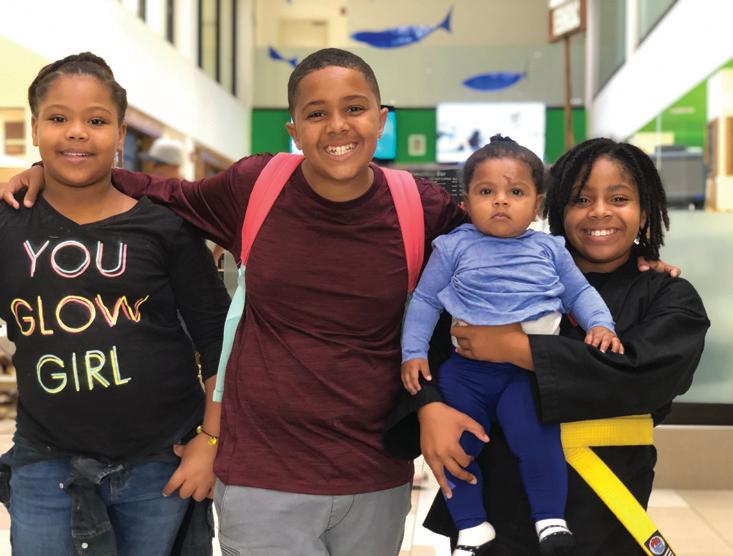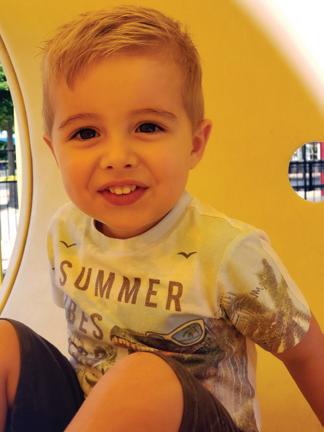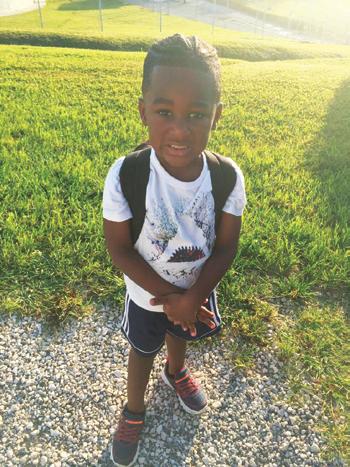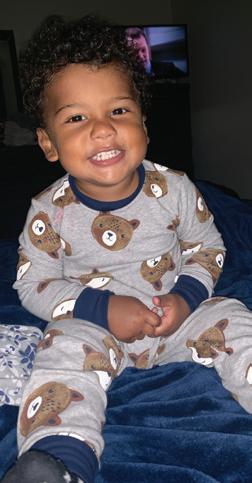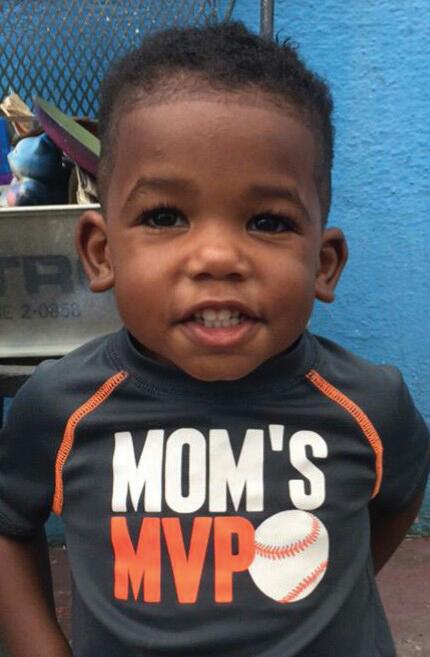Parent BERMUDA
What Parents are Talking About

creative CONSEQUENCES
GRIEF AFTER TERMINATION
ELIMINATE Bad Habits
FOR STRESS & ANXIETY Natural Remedies

POWERED BY


What Parents are Talking About

creative CONSEQUENCES
GRIEF AFTER TERMINATION
ELIMINATE Bad Habits
FOR STRESS & ANXIETY Natural Remedies


I encourage each of you to begin to reflect on the year you have had – the good, the bad and the ugly! What can you remove and improve on? Now evaluate what kind of parent have I been this year? Why is this important? Our children have many influencer’s within their life. As a parent we want to ensure that we are providing seeds of wisdom that can be watered over time and if need be reinforced over time.
I recently attended White Chair Wisdom women’s conference – they touched on parenting and how we have bought into this notion of being the “Supermom”. We need to take off our cap and start to delegate more within our home. Why? By delegating, we begin to enable those within our family to feel useful and build a community atmosphere in our home.
You may have to have several family meetings to refine and define parameters within your home. Remember change is never easy but it’s worth it.
Happy Holidays!
PUBLISHER & EDITOR Katrina Ball

BUSINESS CONSULTANT Vic Ball
ADVERTISING SALES

Wanda Brown
wanda@knbmediagroup.com 333-1925
DESIGN & PRODUCTION Picante Creative
WRITERS & CONTRIBUTORS
Dr. Ayesha Peets-Talbot, Solstice, Bermuda Center for Creative Learning, BELCO, LLL, Bates, Oxford Learning, Danielle Pacheco
CONTRIBUTING PHOTOGRAPHERS
Becky Spencer Photography
Bermuda Parent Magazine is published four times a year. Reader correspondence, photo submissions and editorial submissions are welcome. We reserve the right to edit, reject or comment editorially on all material contributed. No portion of this magazine may be reproduced without express written consent of the publisher. The opinions expressed by contributors or writers do not necessarily reflect the opinions of this magazine. Distribution of this product does not constitute an endorsement of the products or services herein.
CONTACT US info@knbmediagroup.com
Tel: 504-2937
www.mybermudaparent.com
facebook.com/bdaparentmag


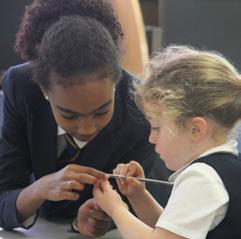
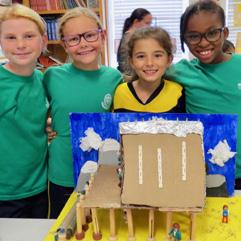
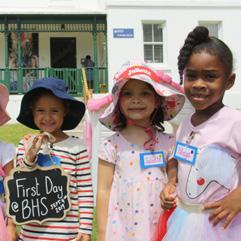


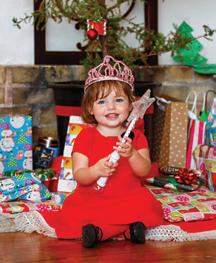

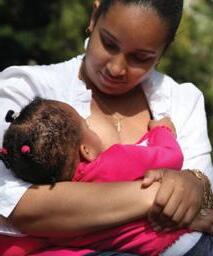


With the Select Invest Accumulator Plan from Butterfield and regular monthly contributions—from as little as $250 per month—your money is automatically working harder for you through one of Butterfield’s four separate “fund-of-funds” investment portfolios.
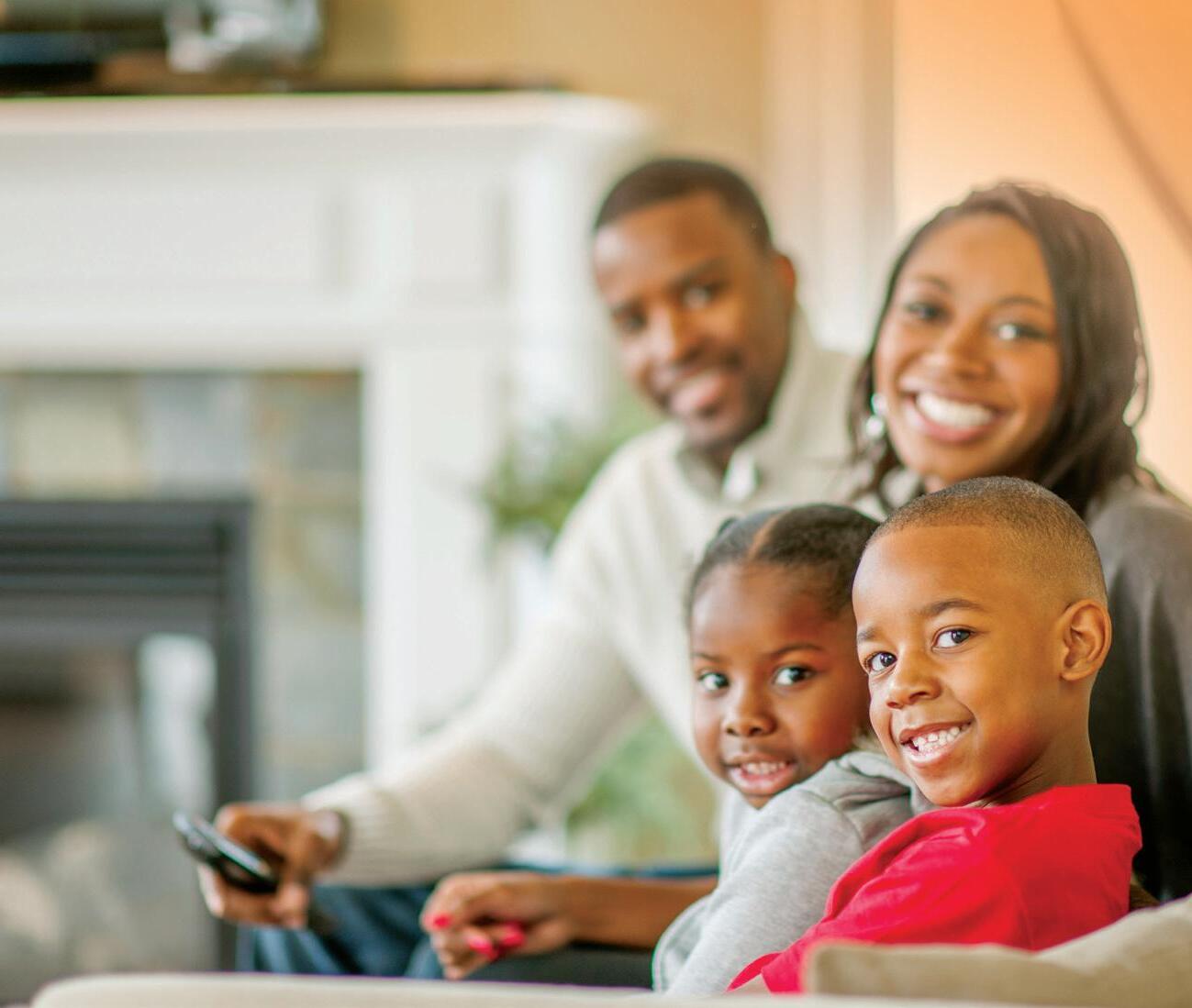
It’s time to make your investments count. There’s a Select Invest portfolio to suit the goals and risk tolerances of virtually any investor.
For more information and an appointment to discuss your investment needs, please contact us on 299 3817, email us at invest.bermuda@butterfieldgroup.com or visit our website.
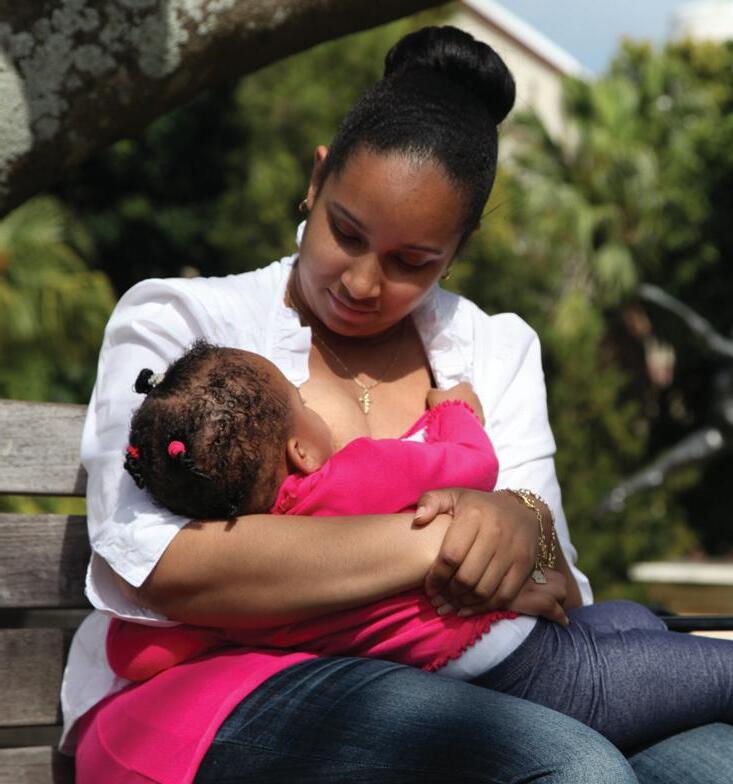
Are you exclusively breastfeeding? Wondering when your little one should start eating solid food? While mothers in Bermuda are encouraged to start complementary foods as early as four months, there are many benefits to waiting until six months. The World Health Organization (WHO), the American Academy of Pediatrics (AAP) and the Centers for Disease Control (CDC) all recommend exclusive breastfeeding until baby is around six months old.
Human milk is the only food that healthy, full-term babies need for about the first six months of life. The composition of human milk changes in response to a variety of cues, so that each mother provides milk that meets her own baby’s unique needs. Human milk provides immunity factors for as long as the baby nurses, and many of the health benefits of breastfeeding continue well into childhood and beyond. “Introducing babies to complementary foods too early can cause them
to miss out on important nutrients that come from breastmilk.” explains Chloe M. Barrera, MPH, from the CDC.
What are the benefits of introducing solids at around six months? Babies are born with very immature digestive systems. While the gastrointestinal tract is still maturing, infant’s systems are not equipped to digest anything but breastmilk. If anything but breastmilk is introduced, it may alter baby’s gut microbiota, causing problems like necrotizing enterocolitis, diarrheal disease, and allergies.
“In infants, the ring of muscle between the esophagus and the stomach—the lower esophageal sphincter (LES)—is not fully mature, allowing stomach contents to flow backward,” says Andrew E. Mulberg, M.D., a pediatrician and pediatric gastroenterologist at the Food and Drug Administration (FDA). “In time, the LES will mature and open only when the baby swallows and will remain tightly closed the rest of the time, keeping stomach contents where they belong.”
Holding off on all solids until six months of age can boost your child’s long-term health. Because infants who start eating food need less calories from breastmilk, they may lose out on some of the most important benefits of breastfeeding. These include lower risk of obesity, diabetes, respiratory and ear infections, as well as Sudden Infant Death Syndrome (SIDS). Breastfeeding also reduces the frequency of doctor visits, hospitalizations, and prescriptions, according to the CDC.
“One of the benefits of breastmilk is that each mother provides customdesigned milk to protect her infant,” according to Dr. William Sears, an American pediatrician and the author
of parenting books. “When a baby is exposed to a new germ, mother’s body manufactures antibodies to that germ.” One study suggests that these maternal antibodies in breastmilk improve an infant’s intestinal immune system—an effect that continues to benefit baby well into adulthood.
Breastfeeding exclusively for the first six months has been shown to significantly lessen the risk and severity of food allergies in families with a strong history of them. It may also reduce the risk of skin sensitivities, like eczema.
It’s important to keep in mind that maintaining a sufficient milk supply requires mother to nurse frequently - nursing is all about supply and demand. When you start introducing solids, baby may take less breastmilk because calories are being provided elsewhere. But babies under six months of age get all of the calories and nutrients they need from breastmilk, so there is no need to put your supply at risk by introducing solids.
Babies are unique, every baby is different, and every baby develops at different speeds. Some babies are more advanced and may be ready for solid foods around five or five and a half months; other babies may not be ready for solid foods until seven or eight months. Watch your baby, not the calendar! Look for these signs that your baby is ready for solid foods:
• Baby is about six months old
• Baby is able to sit, unsupported
• Baby has lost his tongue-thrust reflex, meaning that he does not push foods out of his mouth with his tongue
• Baby can pick things up between his fingers and thumb.
When you do introduce solids, don’t rush it. Only introduce one food at a time and wait a few days before adding other items. In order to maintain your milk supply, offer the breast before offering solid food. Most babies are happy to begin with fruits, such as bananas, unsweetened applesauce or avocados. Baked or boiled sweet potatoes, cut in tiny chunks, mashed white
potatoes and baby carrots, green beans, peas and squash are also nutritional first foods.
The WHO recommends that, in addition to breastmilk, baby eats solids
• 2-3 times a day between 6-8 months,
• 3-4 times a day between 9-11 months,
• 3-4 times a day with an additional snack
• 3-4 times a day with an additional snack 1-2 times a day between 12-24 months.
Babies grow up very quickly. Savor that brief time when you are exclusively breastfeeding. Introducing solids is also the beginning of weaning. You needn’t hurry when it comes to feeding your baby complementary foods- your baby will let you know when he or she is ready to begin eating table food.
References:
Introducing Solids: Why You Should Wait Until 6 Months: https://www.mamanatural.com/ introducing-solids/
Babies Spitting Up—Normal in Most Cases: https://www.fda.gov/consumers/consumer-updates/ babies-spitting-normal-most-cases
The American Academy of Pediatrics: http://pediatrics.aappublications.org/content/129/3/e827. full#content-block
The Infant Microbiome: Implications for Infant Health and Neurocognitive Development:
https://www.ncbi.nlm.nih.gov/pmc/ articles/PMC4681407/
When is the right time to start infants on solid foods: https://www.sciencedaily.com/ releases/2018/01/180104120250.htm
Starting Solids, La Leche League International:
https://www.llli.org/ breastfeeding-info/starting-solids/
Located at 69 North Shore Rd, Hamilton Parish. Serving families in the Eastern Parishes and beyond since 1998. Your child‘s day is comprised of opportunities to build an excellent foundation for the early years of education. Our approach to teaching provides our children with sound moral principles, exploratory learning, early literary skills, monthly Early Years programs with the Bermuda National Gallery, Bermuda Gymnastics, Music Classes with Simons Music School and Spanish.

Teachers Qualified ECE, First Aid & CPR Certification, SCARS Trained and Vetted Staff. Accepting students 18 months to four years of age.
Hours: 7:30 a.m. - 5:30 p.m.
Currently accepting applications 2019/20. Contact us at 737-8385 or happymomentsnews@yahoo.com

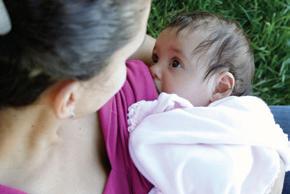
EXPENSIVE – can cost over $2,300 to formula feed a child for a year
FREE of cost and natural No risk of contamination
Contact SCARS for training dates
Email: info@scars.bm
Telephone: 297-2277
or go to our website
Darkness to Light Stewards of Children Training SCARS can bring the training to your organization or home


Increased risk of contamination from added water –increasing the risk of diarrhoea by 10 times Lack of antibodies
Has antibodies which help protect infants from germs, illness and even sudden infant death syndrome commonly knows as (SIDS)
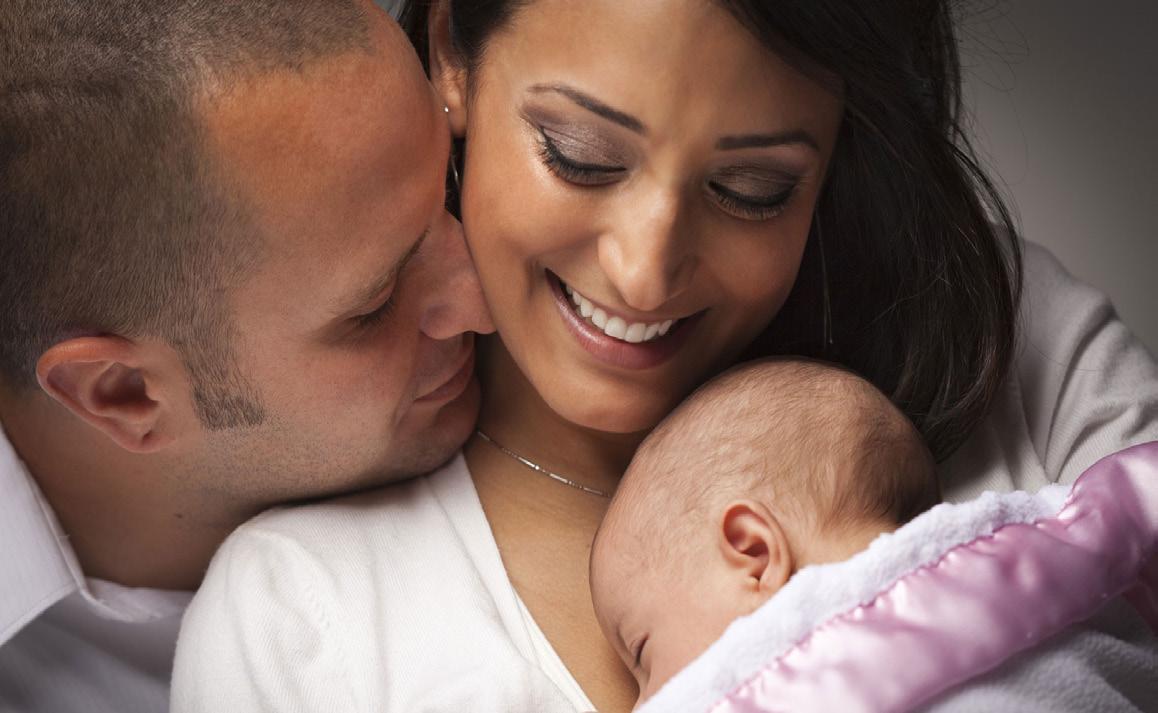

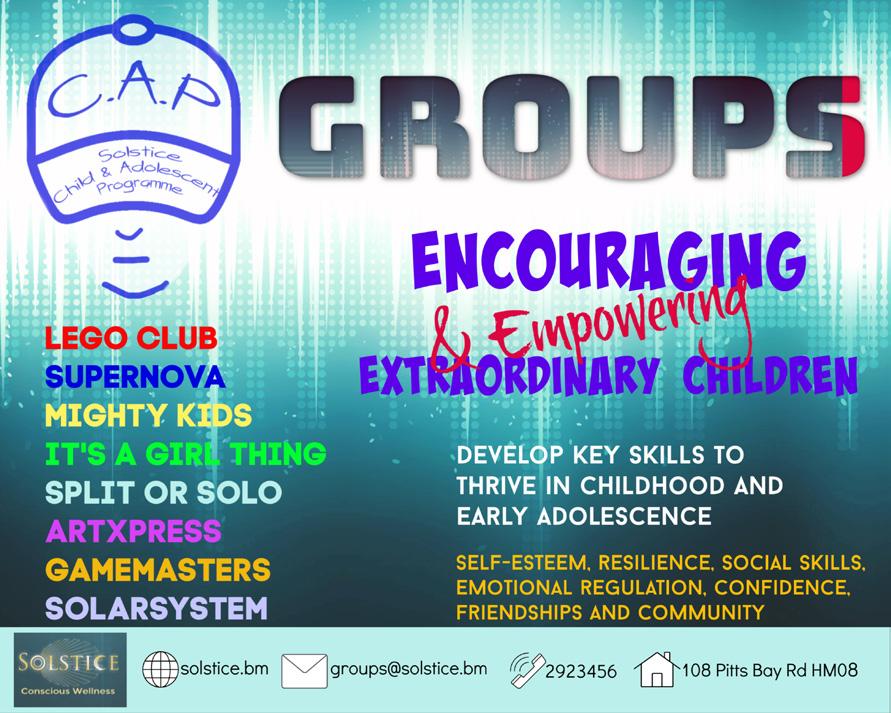
Under Bermuda Law, a pregnancy may be terminated on the grounds of incest, rape, and maternal or foetal health. This article focuses on grief following a medical termination due to maternal or foetal health.
The decision to terminate a pregnancy is, obviously, a very difficult one. It is important that women and their partners faced with this situation receive as much information as possible about the particular health condition and their options.
Common feelings in this situation include:
• A sense of disbelief and unfairness – questioning why has this happened?
• Feelings of guilt, inadequacy and shame: that they have passed something on to the child, that there is something wrong with them, or with their side of the family. They may feel they have let their partner down and are not good enough for them.
• Concern and worries about future pregnancies and a fear that the
health issues will be repeated.
• Worries about the termination procedure and whether it may cause difficulties for future pregnancies.
• Feeling overwhelmed by having to make the decision to terminate a desired pregnancy. This is most prominent in the first three months, with their perceived responsibility in determining the pregnancy outcome contributing to feelings of guilt and grief.
• Certain religious beliefs, existing relationship issues, and social stigma can make it harder to cope.
Sometimes couples do not agree with each other that termination is the right decision – this can put enormous strain on the relationship and may cause it to breakdown altogether. Even if they are in agreement both partners can be affected differently by their unique circumstances and may cope differently – typically men talk less about their feelings and report less sadness than women. Couples may feel uncertain how to help or comfort each other.
Coming home after a termination can feel very empty and support from family and friends at this time can make a lot of difference. Ongoing support from others such as a family doctor, counsellors and family is important to come to terms with the decision to terminate a pregnancy.
Feelings of loss and grief are common and may be complicated by selfblame, guilt and social isolation, but feelings of relief can also be present, especially if they suspected something was not going well with the pregnancy. Having mixed and sometimes conflicting feelings is normal – each person’s experience and response will be different.
Feelings of loss may not just relate to the loss of the pregnancy and the foetus but may also revolve around the loss of the woman’s autonomy over her body, the loss of her perception of her own health or the loss of confidence about her ability to produce healthy offspring.
Grief is a universal process that humans experience in order to process any kind of loss. The stages of grief include denial, anger, bargaining, depression and acceptance. Grief does not usually follow a linear path and people tend to oscillate through the different grief stages, sometimes jumping from sadness to anger, denial to acceptance. Grief tends to be most acute during the first three months and usually has subsided by the end of the first year following the termination.
• Confide and discuss with a close family member or friend whom you trust.
• Focus on compassionate self-care – talking kindly to yourself, eating healthily and exercising regularly.
• Write your feelings down in a diary or journal. Allowing yourself to express any sadness and grief that you are feeling will help it to diminish.
• Honoring the grieving process allows you to explore meaning in the pregnancy and to incorporate your termination experience into your life journey.
• Some people may feel angry about aspects of the complex situation surrounding the pregnancy and termination. It can be useful to recognise your anger and to explore the underlying issues.
• Recognise that partners and family members can also experience a wide range of feelings and may be unsure how to comfort and help you. Men and women often grieve differently. Talking to each other can help you to be aware of each other’s feelings.
• Consider creating an ‘end’ to your relationship with your pregnancy by writing a goodbye letter and keeping it in a safe place or burning it.
• Some people benefit from contacting a support group and talking to other people who have had a similar experience.
• Practice relaxation exercises to help deal with stress, and mindfulness exercises to stop negative ruminations. Apps such as ‘Headspace’ and ‘Calm’ may be useful.
Occasionally the symptoms of loss and grief can persist or get worse. If this situation applies to you and you are having difficulty in dealing with your emotions, frequently crying, experiencing changes in sleep or weight, having suicidal ideas and struggling to function then you should seek professional help. Couples counseling can also be a useful option during this time. Seeing a therapist or psychologist together can help you work through the different issues that can arise.
There are a range of different sources of professional support
available in Bermuda. Family doctors are a good first option however you can also self-refer to the Mid-Atlantic Wellness Centre (www.bhb.bm, tel: 2363770) and to private mental health centres such as Solstice (www.solstice.bm, tel: 2923456). Solstice is a large holistic mental health centre in Hamilton which provides wraparound support services to people of all ages – these include psychological assessment and treatment, individual and couples counseling, art therapies, experiential therapies such as therapeutic yoga and massage, and psychiatric services including medication.
 BY KIMBERLY BLAKER
BY KIMBERLY BLAKER
mini shopping sprees and eating out to buying recreational toys and taking expensive vacations.
According to H.
Glenn and Jane Nelsen in Raising Self-Reliant Children in a SelfIndulgent World, “A belief in one’s personal capabilities is an essential building block for successful adulthood.” The best way for children to achieve this sense of capability is to be assigned household responsibilities. Offering children such opportunities makes them feel essential to the family unit and teaches basic skills,
Stephenacceptance of responsibility, and selfdiscipline. Ultimately, it leads to selfesteem and a successful, fulfilling life.
Whether to compensate and reward children for their work is a difficult question. Conflicting opinions are held by child specialists which don’t help. But one thing is certain. Experiencing self-satisfaction from work is important. Even adults receive compensation for their work. In turn, they reward themselves in many ways, from
So your best bet is to take a middleof-the-road approach. Assign your children some responsibilities without reward, such as cleaning their rooms and taking care of personal belongings. This can provide self-satisfaction.
But also offer an allowance or rewards for additional tasks. Children learn valuable lessons from earning as well. They learn to budget and handle money and come to understand hard work pays off, just as it does in the adult world. Whether your child receives a reward for a particular task or not, always praise the efforts. This helps to reinforce the intrinsic value of completing a task.
When selecting prizes, choose something your child wouldn’t receive otherwise. If you go to the park several times a week, an extra trip to the park won’t seem much of a reward. But if you normally go only once a week, an extra visit will be more enticing.
For toddlers and preschoolers, immediate rewards are important. Offer to go to the ice cream store or park, to play a favorite game together, to invite a friend over, or a fun sticker or favorite treat. You can also purchase prizes that come in a set, such as markers. Then offer one piece of the set for each completed task until your child has earned the complete set.
Elementary children are able to save for bigger rewards. Use a chart and offer prizes for accumulated stars. But don’t make your child wait more than a week or so for a reward. Otherwise, the reward will lose its motivational value. Rewards for elementary age children might include additional television or computer time, a trip to the zoo or museum, baking together, having a friend overnight, or a new magazine or matchbox car.
Older kids are able to accumulate points for longer periods and begin to look toward long-term rewards. A teen could accumulate points for several weeks to earn a concert ticket or trip to the
amusement park, a new outfit, or a special privilege such as staying out later or additional phone time.
Toddlers and preschoolers are more capable than we realize. In these early years, children should take on household tasks. Remember that attention span is short at this age. So keep chores brief when assigning them to little ones unless the chores are especially fun. Your preschooler can:

• Make juice
• Frost cakes and cookies
• Set the table
• Rinse dishes
• Empty wastebaskets
• Vacuum (with a small vacuum)
• Dust
• Sort dirty clothes
• Put clothes in drawers
• Pick up toys
• Stack books
• Answer the phone
• Get the mail
• Water flowers
Elementary age children are more coordinated and capable of performing better quality work. In addition to the previous items, your elementary age child can:
• Fix her breakfast
• Prepare microwave foods
• Bake
• Help pack lunches
• Warm soup
• Clean off the dinner table
• Load the dishwasher
• Wash windows
• Clean bathroom sinks
• Fold laundry
• Run his own bath
• Pack her suitcase
• Care for younger siblings (with an adult at home)
• Feed and walk pets
• Vacuum the car
• Take out trash cans
Kids in middle school and beyond can learn nearly any task. During the teen years, introduce new tasks periodically so your adolescent can master all skills. Your teen can:
• Clean tubs and toilets
• Organize the garage, basement, and closets
• Set up a garage sale
• Clean the kitchen, refrigerator, and oven

• Fix dinner
• Make a grocery list
• Grocery shop
• Pump gas
• Do laundry and ironing
• Mow the lawn
• Do minor household repairs

If your child is beyond preschool or elementary age and you haven’t offered many household responsibilities in the past, don’t despair. While it’s better to start when children are young, it may be more difficult, but it’s not too late. Make a plan today to set your child on a path toward self-reliance. You’ll both be glad you did as you watch your child reap the benefits of growing into an independent, successful young adult.
With the guidance of our exceptional faculty, our girls learn to think critically, experiment, improvise and take action. We place a strong emphasis on doing. We invite you to see for yourselves.
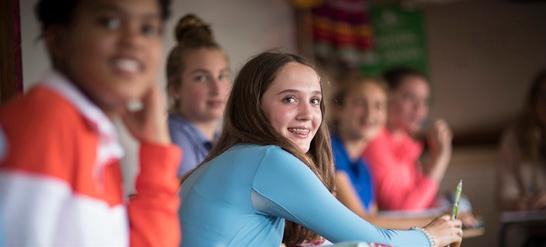
www.ethelwalker.org
Buffalo Seminary is an independent day and boarding high school for college-bound girls. Founded in 1851, SEM is one of the oldest schools for girls in the United States.

On the National Register of Historic Places.
5 student and faculty residences are renovated historic homes adjacent to school, joined together by a private courtyard. An urban boarding school: girls walk to Starbucks, art galleries, shops, and restaurants.
Accredited by the New York State Association of Independent Schools (NYSAIS). Members of the The National Association of Independent Schools (NAIS), The Association of Boarding Schools (TABS), The Small Boarding School Association (SBSA), National Coalition of Girls’ Schools (NCGS), and the Online School for Girls.
Unique 4-year curriculums in computer science and girls’ health & leadership.
• Harkness tables
• Mandarin, French, Spanish
• 33 Student-run clubs, 17 Athletic teams
• 6:1 Student-Teacher Ratio
• 10 International Student Home Nations (2019-20)
• 67% Faculty with Advanced Degrees
• 1:1 tablet school, every student is issued her own computer.
• Offer summer camp.
Committed Steinway Select School. SEM will be one of a handful of K-12 schools in the world to be certified.


Independent day & boarding school for college-bound girls
Buffalo Seminary
205 Bidwell Parkway
Buffalo, NY 14222
1-716-885-6780
ekelly@buffaloseminary.org
www.buffaloseminary.org
At Walker’s, girls are thinkers and doers.
Founded in 1930, Forman School is a coeducational college preparatory school for grades 9-12 and PG exclusively dedicated to empowering bright students who learn differently. Forman’s expert faculty deliver unparalleled education for academically motivated students with identified learning differences such as dyslexia, executive function difficulties, or attention deficits.
Forman develops the whole student, based on his or her unique learning profile, so that every graduate becomes an educated, confident, self-advocate throughout life. In a traditional boarding school setting, students are guided in learning strategies by specialists who are also coaches, mentors, and dorm parents. With a student-faculty ratio of 4:1, students move outside their comfort zone and explore new ideas in a close-knit community. Forman’s 100% college placement rate reflects the reignited passion for learning our students experience. Hailing from 28 states and 9
countries, the diverse community interacts closely in a family-style atmosphere with an active student life program.
Forman’s 125-acre campus includes four athletic fields, a gymnasium, rock climbing wall, science center, Ingenuity Lab, and dormitories. A new Visual and Performing Arts Center including a 300-seat theater and state-of-the-art classrooms has enhanced students artistic opportunities.
For more information, contact the Office of Admission at 860.567.1802 or admission@ formanschool.org.
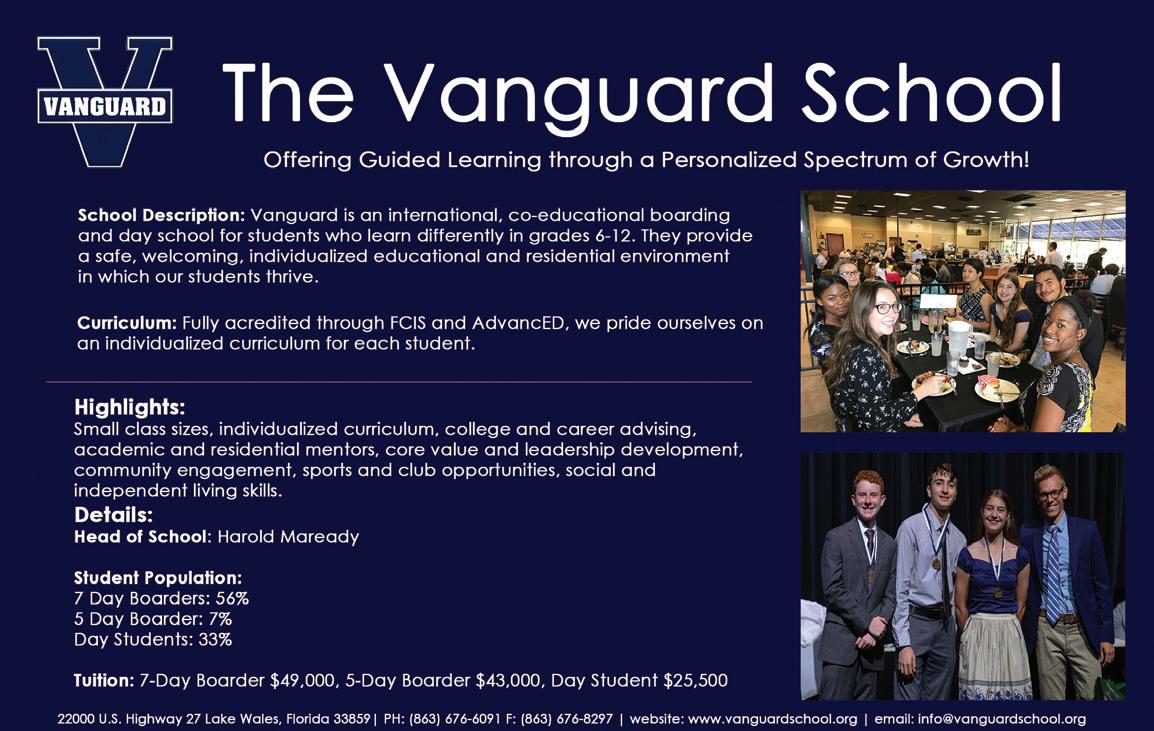
Forman also offers a four-week Summer Program in July where students discover their learning styles, self-advocacy, research-proven strategies, and executive function skills. Afternoon activities include jewelry making, boat building, athletics, ropes course, theater, horseback riding, fishing, and more.
12 Norfolk Road
Litchfield, CT 06759
p: 860.567.1808
www.formanschool.org
admission@formanschool.org
Forman is a coeducational college preparatory school empowering bright students who learn differently.


Don’s





Hours:

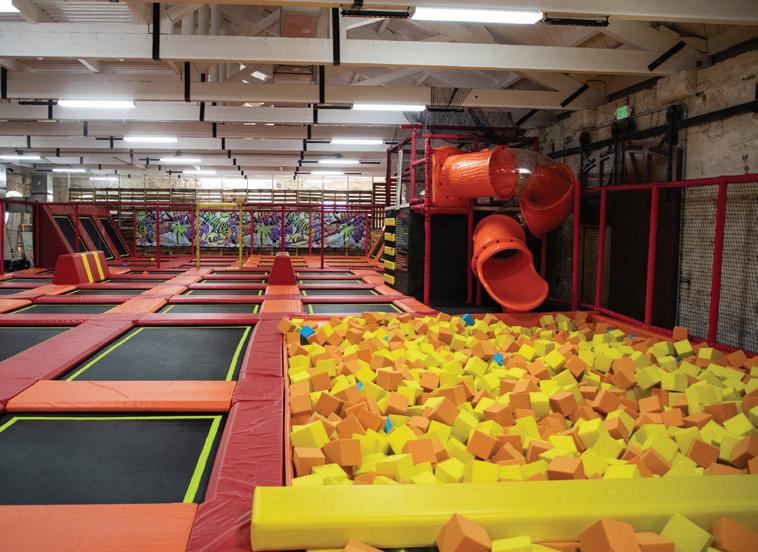
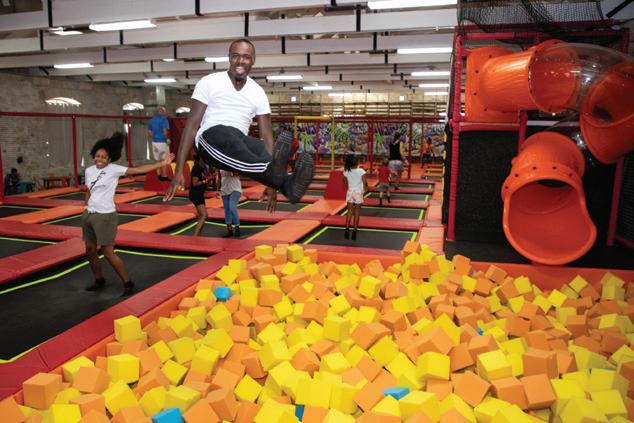
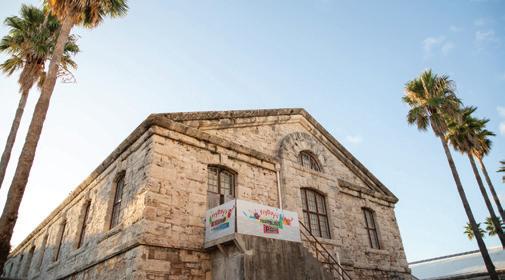
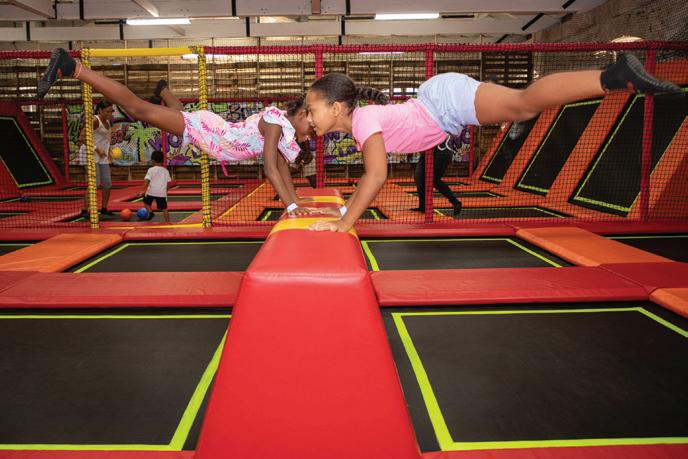

Since Joshua Bate Trading Bermuda Ltd has been serving and saving Bermuda since 1992, it has always been our mission to give back to the community, as much as possible. When Joshua Bate learned about the US organization, “Sleep in Heavenly Peace” (SHP), he knew he wanted to establish a chapter in Bermuda. Negotiations are currently in process.
The main goal of SHP.org is to “Help Children in Need Sleep Better.” They believe that all children deserve a safe, comfortable place to lay their heads. All over the world, too many boys and girls go without a bed—or even a pillow—to sleep on. These children end up sleeping on couches, blankets, and even floors. This can affect their happiness and health.
SHP.org is group of volunteers dedicated to building, assembling and delivering top-notch bunk beds to children and families in need. Their organization has grown steadily over time, and they’re working on opening more chapters to serve more people everywhere.
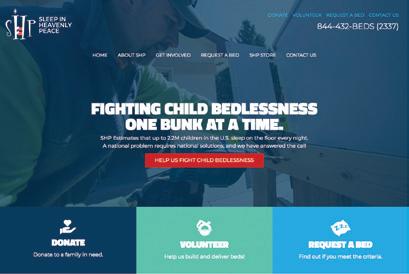
Sleep in Heavenly Peace started like many other charities, in a garage in the US. It was Christmas time, a time of joy and happiness, a time of giving and love, but also a time of bitter, cold weather and snowstorms. A project, that was started with the build of one bed for a single family developed into something a whole lot more. With wood left over from the first bunk, another idea was created. “Who else could benefit from this bunk?”
A simple post on Facebook sparked an unexpected response. What was thought would be a litter
of requests from needy families, turned into a litany of local people eager to help and volunteer. The generosity of these volunteers was so surprising that it was no longer a search for one who needed a bed, but a question of how many beds they could provide. From there, the idea grew into reality. They realized they could make a difference. So many great charities provide clothing, meals, and toys to families in need. But as wonderful as this aid is, few organizations offer suitable beds and bedding to the kids in these families.
BY BATE’SSHP.org believes that a bed is a basic need for the proper physical, emotional, and mental support that a child needs. When it was brought to their attention that the need for beds went far beyond their own neighborhoods, they stepped up and took initiative. They are now an international organization, answering the call to a worldwide problem.
If a child needs a bed, they want to make sure they get one. They live by, “No kid sleeps on the floor in our town.”
How can you help? Once Joshua Bate Trading Bermuda Ltd establishes the Bermuda Chapter of SHP, we will make announcements through the local media, and will be actively seeking assistance.
Sleep in Heavenly Peace is where it is today because of the passionate volunteers who believe in the mission of getting kids off the floor and into beds. In exchange for just a few hours of your time, you could make a direct, permanent impact in the quality of life for dozens of kids in our community.
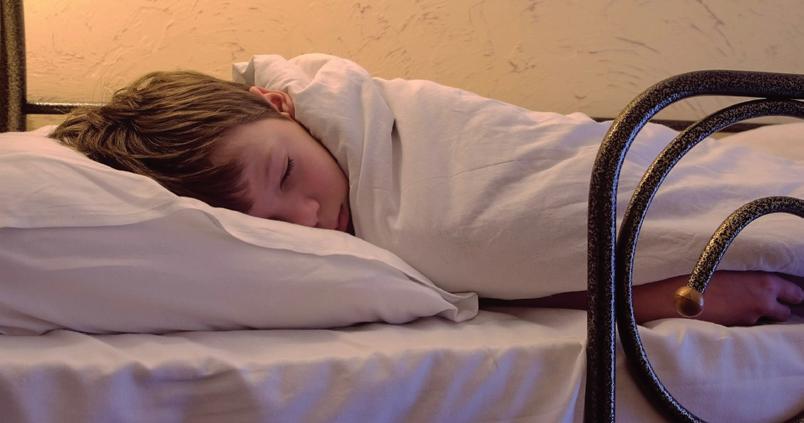
Volunteering with Sleep in Heavenly Peace can provide a number of wonderful benefits. Volunteers literally learn how to build bunk beds. They have a chance to learn how to use woodworking tools such as saws, drills, sanders, hammers and many other pieces of equipment. They learn how to measure, level and make true woodcuts. They learn how to sand and stain wood. They even get to see how branding a bed works.
SHP volunteers can often see what conditions people are sometimes forced to live in and this can help them appreciate the blessings they have. It gives them a sense of accomplishment and service to their fellow man. Most
of all, they get to see the faces of the children as they climb into their newly delivered beds. This is a moment not easily forgotten.
Volunteering with SHP also provides the opportunity to meet other wonderful volunteers within the community. Rubbing shoulders with complete strangers while building a bed for a needy child can turn into lifelong friendships. The project brings people closer together as everyone focuses on the same goal, helping children “Sleep in Heavenly Peace.”
The Bermuda Chapter will also be seeking monetary donations, sponsorships and assistance in determining children in need of beds. And

spreading the word may be the most important way for people to volunteer.
“Sleep in Heavenly Peace” was started from the voices of people willing to open their mouths and spread the word. It takes the entire community to find, organize and supply these terrific children beds to sleep in. You will be amazed at the response you receive when you share with others your involvement with the SHP organization. The more volunteers that we have, the more beds we can build and the more children we can help!
If you want us to contact you directly when we are up and running, please email Matt Gerardo at sales@bates.bm. Stay tuned for more details …
1. Baby Alive Happy Hungry Baby
Baby Alive Happy Hungry Baby loves to eat! With adorable doll movements and over 50 sounds and phrases, she moves, giggles and asks for more. Find this sweet baby doll at The Annex Toys as the perfect gift for boys and girls ages three years and older.
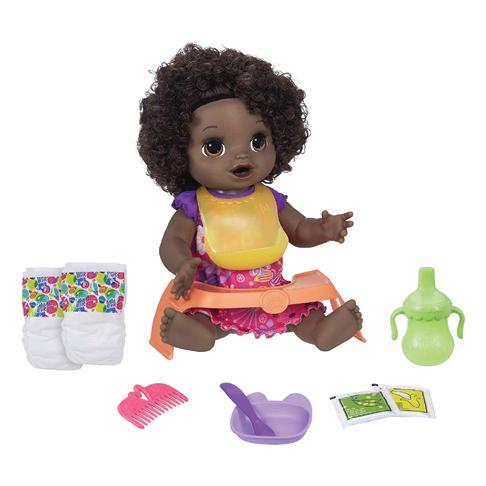
2. Dove Holiday Gift Set

Celebrate 60 years of real beauty with the Dove Deep Moisture Holiday Gift Set available at The Phoenix Stores. Give the gift of superior care with this limited edition set featuring a Dove White Beauty Bar, Deep Moisture Body Wash, Intensive Repair Shampoo and Conditioner and a white body pouffe.
3. Barbie Dreamtopia
Brush ‘N Sparkle Unicorn
Ride into a fantasy adventure with the Barbie Dreamtopia Brush ‘N Sparkle Unicorn available at The Annex Toys! This unicorn’s dazzling lights and sounds create a wow moment every playtime.
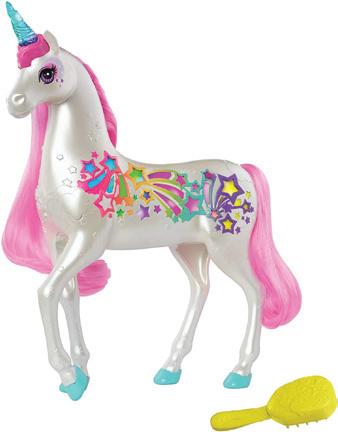
4. Designer Fragrances

New to The Phoenix Centre is a fantastic selection of designer fragrances. Pop by the ground floor level to explore scents by Beyonce’, Rihanna and more.

5. Conair For Men
All-In-One Trimmer

Let him unwrap a new him this Christmas with a Conair All-In-One Trimmer available at The Phoenix Stores. The premium silver finish and powerful, stainless steel blades provide precise even trims to have him smooth and handsome for the holidays.
6. KidKraft Farm To Table Play Kitchen
Inspire delicious fun for little chefs with the trendsetting KidKraft Farm To Table Play Kitchen available at The Annex Toys. This kitchen whips up the fun and cooks up memories for little chefs with an 18-piece accessory and play-food set, a farmhouse sink with lights and the sound of running water, a fire-inspired light and sound cooktop, three “choppable” carrots and onions and a pretend herb garden. The refrigerator even dispenses “ice cubes”. Plus, the EZ Kraft Assembly means you’ll have it put together in no time.
7. Lamborghini Ride On Vroom…Vroom! The Lamborghini 12V children’s ride-on at The Annex Toys will have your little one cruising the neighbourhood in style. Equipped with fully opening doors, working lights and MP3 input, this ride-on can be driven by the accelerator, foot pedal or remote control.

8. Pokemon Celestial Storm
Watch out for the vortex in the Pokemon Trading Card Game: Celestial Storm expansion! It’s a season of furious emerald storms and a sky alive with portents, as Pokémon and creatures from Ultra Space clash. Collect over 160 cards from The Annex Toys.

9. Poopsie Rainbow Surprise
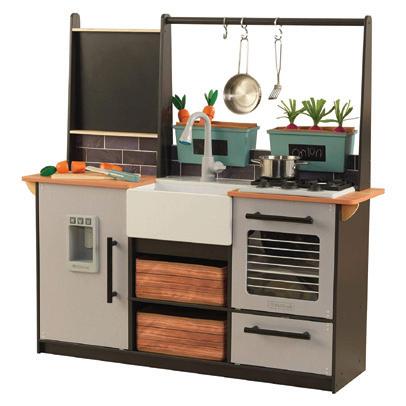
Which Poopsie Rainbow Surprise doll will your child unroll? It’s a surprise! Available at The Annex Toys, each baby comes with D.I.Y. slime powders, an outfit to design your doll’s look and more than 20 surprises!
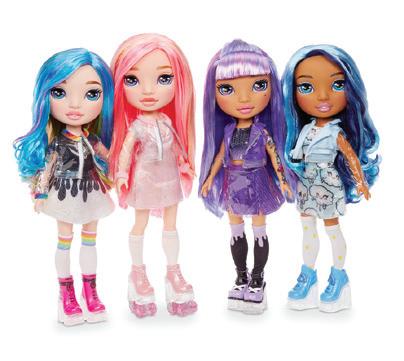
10. Cuisinart Precision 3.5 Qt Mixer Cuisinart continues to change the way the world mixes! The Cuisinart Precision 3.5 Qt Mixer is just the right size for most mixing tasks and boasts 12 speeds for superior control, the accessories needed for virtually any mixing job and optional attachments to do even more! Visit The Basement at The Phoenix Centre today.
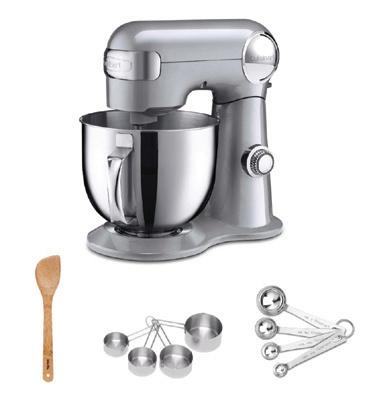
11. Hot Wheels Corkscrew Crash Track Set
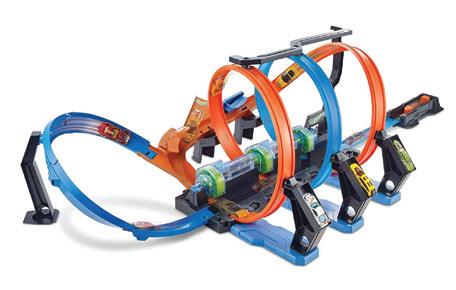
The Hot Wheels Corkscrew Crash Track Set is the ultimate set for speed and motorised boosted action! The unique corkscrew design sends cars flying around the track at dizzying speedscrashing and smashing through the triple loop with three high-action crash zones and three high-speed boosters. This massive set is great fun for one or two players and comes with a Hot Wheels car. Visit The Annex Toys to explore the Hot Wheels collection in-store.
12. L.O.L Surprise! O.M.G. Dolls Unbox L.O.L. Surprise! O.M.G. Outrageous Millennial Girls fashion dolls. With 20 surprises, they’re always extra but never too much. Each L.O.L. Surprise! O.M.G. includes a fashion doll, fierce fashions, shoes, a shoebox, accessories, a hatbox, a purse, a brush, garment bags, a doll stand and a package that becomes a reusable playset. Collect all 4 L.O.L. Surprise! O.M.G. dolls from The Annex Toys today.
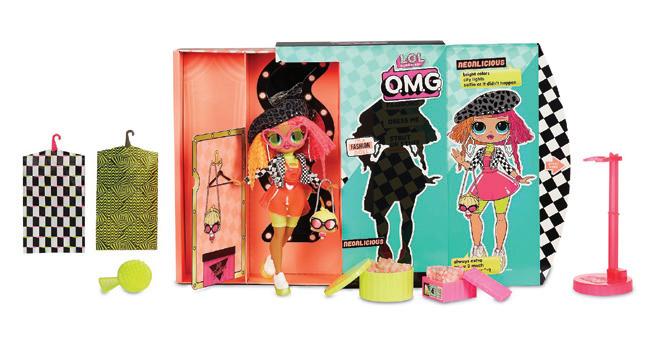
Having moved around to several schools, including two in Canada through much of her life, for the past two years India Hill has finally been able to settle into school in Bermuda.
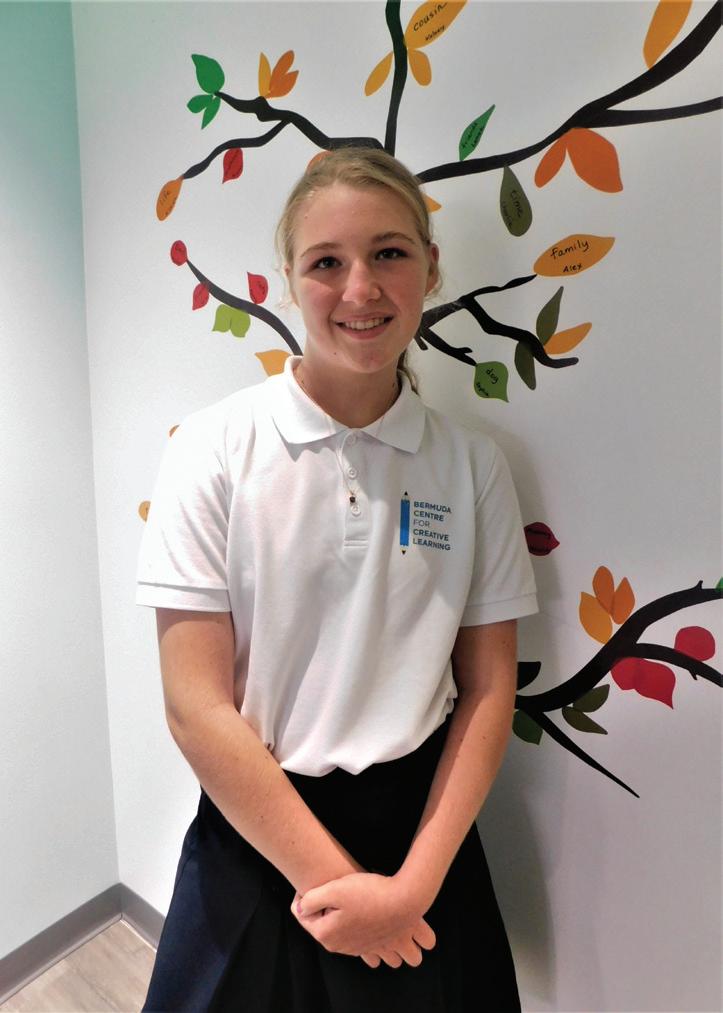
That positive change is due in part to her current school, Bermuda Centre for Creative Learning (BCCL), which is designed specifically for students with diagnosed language-based learning differences.
India, 15, was born with a rare genetic mutation, which can affect practical life skills and intellectual functioning. Learning differences can also manifest but from an early age, her parents, Scott and Tricia Hill, have made sure to provide early therapeutic interventions to help India reach her potential.
India was at school in Canada when the family heard that a new school for students with learning disabilities was opening in Bermuda. They hoped that it might be the perfect fit for India and would mean a return for her to their island home and close-knit extended family, as well as her dad and older sister, who had remained in Bermuda during that time.
“We’d been through many schools here, and when India outgrew her time at Somersfield, we looked at other options including homeschool, but we were unable to find anywhere that was willing to take her on here,” said Ms Hill. “We spent four years in Canada, but we were thrilled when
BY BERMUDA CENTRE FOR CREATIVE LEARNINGLindsey Sirju and Cindy Corday opened up the school here, which meant we could make the move back to Bermuda.”
It ended up being full circle for the family, as Mrs Sirju had been India’s support teacher at Somersfield. While Ms Hill planned her and India’s move back to the island, BCCL was setting down roots and made a huge impression on the family once they were ready to enroll India at the school in 2017.
“The school has done an amazing job with how quickly they’ve grown. By its third year, when India started, it was like it had been in place for many years,” said Mr Hill.
One of the things that most impressed them is the school’s ability to adapt to India’s needs. “They look at each child separately and approach their learning differently,” said Mr Hill. Ms Hill added: “India has excellent social skills and there are certain areas where she is much stronger. But the school addresses where she is weaker academically and fosters her as she moves up at her own pace.”
For India, the school has helped her to gain self-confidence. “She sees other kids around her that are similar, and she doesn’t feel like an outsider. It’s great for her to feel like she’s not the only one,” said Ms Hill.
“My favourite thing about school is getting to come here and hang out with my friends,” said India.
Aside from hanging out with friends, she said she enjoys drawing “pretty much anything that comes to my mind,” and doing research on the Chromebooks recently donated to the school by Skyport.
Outside of school, India is also an avid horseback rider, baker and dancer. She also loves music and singing. “I have a karaoke machine that comes with a wireless microphone and I have a blast with it,” she said.
Cindy Corday, BCCL Co-founder included, “Initially, India was shy and reserved with her peers and teachers. Her self-confidence has grown considerably, and it shows as she is now able to advocate for herself. India often speaks up when she needs help, asking teachers to repeat information, or have concepts explained to her in a different way. Our calm and nurturing approach has allowed her, and other students to make considerable gains academically and more importantly in increasing their social skill development.”
As the family considers the next steps for India once she has completed her time at BCCL, they reflect on what she’s gained. “We’ve been so pleased with the school that I wish it could go on forever,” said Ms Hill. “But for her own independence, we need to think about next steps. She has definitely thrived here, and they have given her new tools in her belt to cope, so they have definitely helped her to become more independent.”
Bermuda Centre for Creative Learning’s personalised learning approach focuses on student’s individual skill levels in English and math based on the UK National Curriculum and allows them to move year levels when they are ready. For children who have been diagnosed with dyslexia, ADHD and other languagebased learning differences, a flexible and nurturing approach is a key factor for setting students up for success. BCCL is recognized as a private school with the Ministry of Education and enrolls students ages 6 to 15. Visit www.bccl.bm for more information.
BCCL was created for children starting at age 6, who have learning differences and learn best in a non-traditional environment that facilitates each student’s individual learning style.
Prior to enrolling at BCCL, students are required to be assessed on island or away and have been diagnosed with learning differences, such as dyslexia, auditory processing disorder, ADHD and other language-based disorders. BCCL is recognised as a private school by the Bermuda Ministry of Education.

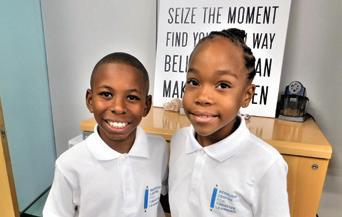
Contact us
Bermuda Centre for Creative Learning


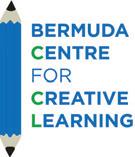
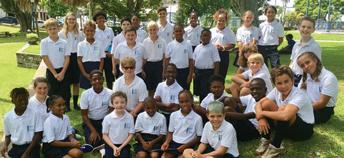
41 Cedar House North Cedar Avenue
Hamilton, Bermuda HM 12
Telephone 1.441.824.1111
Email info@bccl.bm
Website www.bccl.bm
Charity #985
“My favourite thing about school is getting to come here and hang out with my friends,” —India






















































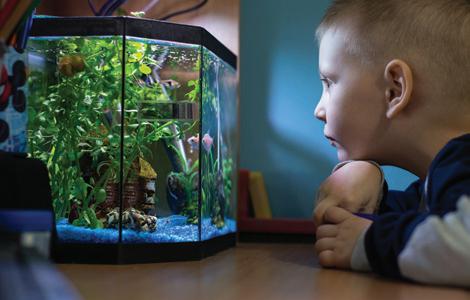

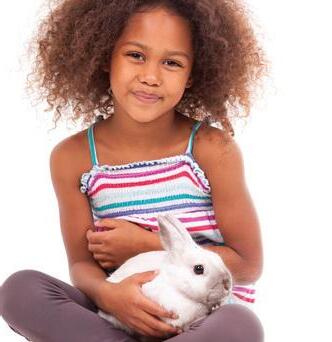
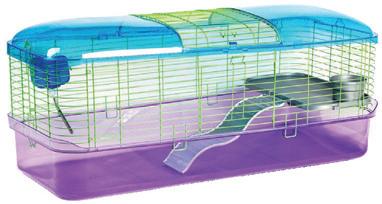



























































Setting resolutions is a common way to begin the New Year. From healthier eating to exercising more, the New Year presents an opportunity for students of all ages to hit the re-start button in life, both in and out of school.
“The New Year is a chance for students to evaluate their academics and get any needed help,” says SharDae Whitter, Centre Director Oxford Learning Bermuda. “This is the time for students to renew their school motivation and set academic goals to get back on track.”
When setting goals, Whitter recommends that students follow
the CAM rules: keep goals Clear, Achievable, and Measurable. Students should keep goals concrete, with milestones to mark improvement. For instance, a C-minus student shouldn’t set a goal of winning a math scholarship, but instead, set a goal of getting a C-plus by the next test and a B by the test after that. Another great way that students can ensure they start the New Year off on the right foot is by eliminating bad school habits. Whitter suggests that students resolve to include one or more of these habits in their New Year’s resolutions:
1 Rise and Shine. By setting alarm clocks 10 minutes earlier, students can reduce the morning rush and alleviate stress.
2 Tune Out. By simply eliminating one half-hour of TV or computer screen time, students have more time to focus on schoolwork.
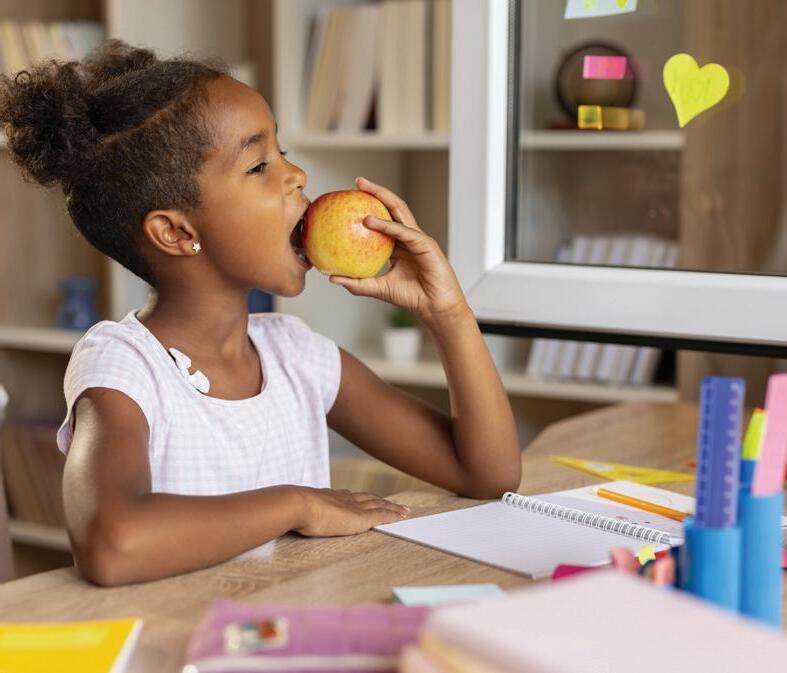
3 Be Prepared. Students can check items off their to-do list by preparing for school the night before. Choose clothing, re-pack book bags, and prepare lunches at night to reduce the morning rush.
4 Get Organized. Agendas help students stay on track so that homework and assignments are not forgotten.
5 Stick to a Schedule. Hang wall calendars in a visible spot and be sure to write down all school assignments, extra curricular activities, and social engagements.
6 Hit the Sheets. A better night’s sleep ensures that students are less sluggish more mentally alert during the school day.
7 Hit the Books. Extra curricular reading is one of the bestknown ways for students to build vocabulary and develop strong language skills.
8 Eat Right. Healthy eating habits keep the brain active all day. Avoid sugary treats and heavy meals, which can cause attention levels to crash.
9 Get Outside. Take in some fresh air and get the blood pumping with some exercise. Exercise has been shown to increases circulation to the brain.
“When students start the New Year off by setting academic resolutions, and by eliminating bad habits, they set the tone for success for the rest of the school year, ” says Whitter.
For over 25 years, Oxford Learning has been helping students of all ages develop better school habits. Whether it is goal setting, reading comprehension, math skills, or homework help, Oxford Learning’s programs helps students start the year off on the right foot.
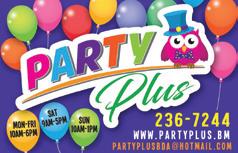
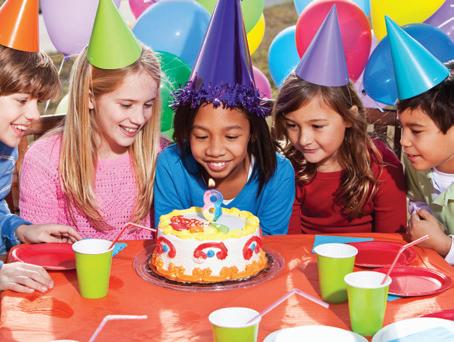
For more information about goal setting or any of Oxford Learning’s programs, contact Oxford Learning Bermuda at 441.296.6060 or Bermuda@ oxfordlearning.com.

All grade-level programs at Oxford Learning begin with our in-depth academic and cognitive assessment that allows us to pinpoint a child’s unique learning needs. With the detailed results, we create an individualized program that meets your child’s learning needs exactly. Programs are scheduled into 1-1.5 hour classes, twice a week.
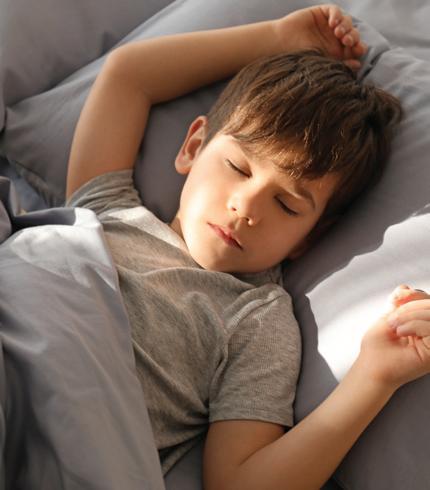
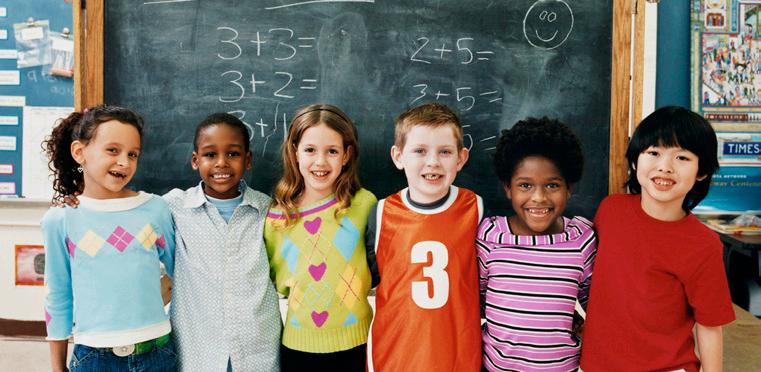


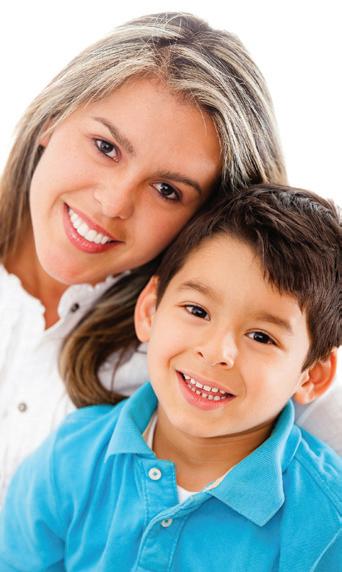



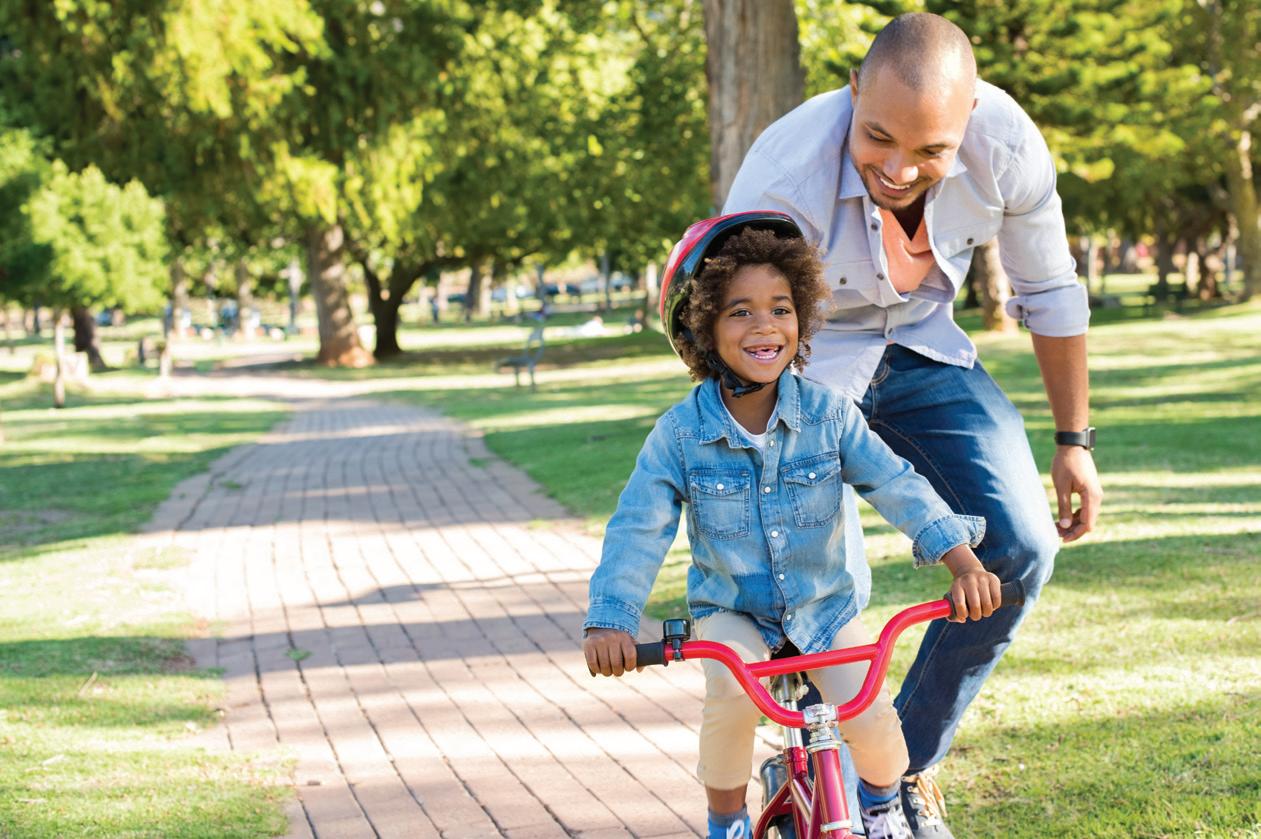 BY JILL DAVIDSON, PEDIATRIC OCCUPATIONAL THERAPIST, FUNCTION JUNCTION
BY JILL DAVIDSON, PEDIATRIC OCCUPATIONAL THERAPIST, FUNCTION JUNCTION
The weather is cooling down, and kids are starting to get out their bicycles again. (Summer in Bermuda is just way too hot). It’s time to start working on that life skill. Yes, I will classify bike riding as a life skill. Ask an Occupational Therapist… and they will be able to link the skill of riding a bike with handwriting, reading and other academic skills. When analyzed, it is a complex task with many underlying components. The typical progression may start with ride-on toys at 1 year of age…and move onto a balance bike at 2 or 3 years…and a regular two-wheel bicycle at 4-5 years
old. However, this is not always the case. I often meet 8 and 9-year old children that are still very nervous to try bike riding. I will identify the foundation skills for learning to ride a bicycle, important skills to learn on/off the bike, and how you can assist your child in achieving success with this incredibly awesome life skill.
Riding a bicycle can help develop many skills that will impact their social and academic skills. Some of the underlying skills include:
• Balance
• Leg strength
• Grip strength
• Oculomotor skills
• Endurance
• Perseverance
• Attention / focus
• Bilateral integration
• Proprioceptive feedback
• Overcoming challenges
• Core Strength
• Posture
• Head moving separate from body
• Reciprocal leg mvmt
1. Ride-on
These come in all sorts of designs. It could look like a car, or a zebra! Kids learn how to get on and off and propel themselves forward (and backwards). Be sure to allow them time to learn how to maneuver the ride-on toy. Help them problem solve “how” to get their body on and off the toy safely. Make sure you
are not just placing them on and taking them off. They need to learn this skill.
If you are not familiar with balance bikes, they are basically a bike with two wheels and no pedals. The child must push with their feet to gain momentum, then lift their feet and “glide”. By practicing this, children learn how to shift their weight on the bike seat to maintain their balance. There are various brands on the market. The one I am most familiar with is the “Strider Bike”. If you are an adult who is still struggling to ride a bike, start with “gliding” down a small incline with your feet “off” the pedals. Feel how you need to move your body to maintain your balance.
If your child has spent sufficient time on a balance bike, then they most likely will make a smooth transition to a regular pedal bike without training wheels.
• Helmet – Ensure that it fits well. Pull down over forehead, and adjust so it is snug under the chin. Shake head – it should not move! Lead by example parents…make sure you wear your helmet too!
• Bicycle – Check tires. Adjust seat. Ensure it is in working order.
• Long pants – When learning, it is helpful to prevent scraps and bumps on the knees. Knee pads are also an option, but many kids have told me they are too cumbersome and awkward.
• Running Shoes – Please no flip flops!

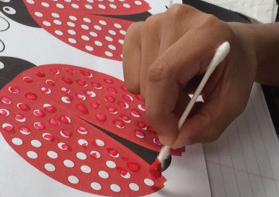
Bike Riding Skills….before you even get on the bike! Many skills can be mastered before your child even gets on the bicycle. If they feel more comfortable handling and managing the bike while standing…then they will have more confidence to get on and ride. Here are some skills to practice with your feet still on the ground.
• Put helmet on/off independently.
• Stand holding the bicycle.
• Keep the bike upright, while you walk “around” the bike.
• Walk the bike forward in a straight line holding the handlebars.
• Walk the bike around an object without it falling over.
• Weave in and out of cones/toys as obstacles.
1. Eyes Up! – Look where you are going. You know where your feet are, so you don’t need to look at them.
2. Strong Arms! – Hold handlebars with a firm grip. Arms are bent slightly and stable to ensure control of the handlebars.
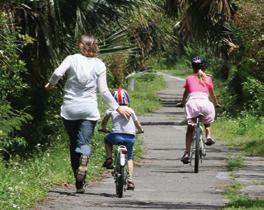
keep the bike upright.
Review the bike riding guidelines. I prefer teaching kids to ride a bike on a grassy area with some hills. The hills help give some momentum as the kids are learning to pedal. Ensure the grass is short and well packed. Thick, bushy grass will be more frustrating. Grass also provides a soft landing. Learning with a bit more resistance on the grass makes the move to pavement easier and a welcome relief for the kids.
Think about your body and your abilities. Personally, I am right-handed, and I am tall. I prefer to grip the back of a child’s shirt with my right hand. This gives me control of the child. As they are biking and I am running/walking beside them….if the handlebars go wobbly and they are going to wipe out….I can lift the child so the bike goes down, and they have a softer landing. Other people prefer to grab onto belt loops. Find what works for you. At all times, remember good body mechanics for yourself! (Running shoes are also essential for the adult who is coaching).
Developmental Screenings
Full Evaluations
Written Reports
Home Programmes
Individual & Group Sessions
Classroom & Home Observations
Bike Riding
Training and Education

Holiday Camps
…and more!
Review and practice the skill frequently. This will help your child remember what they did yesterday and build on the skill. It also helps with confidence. If you don’t have time to get to a good biking location, think about which aspects can be practiced at home. Put helmet on/off…walk bike around obstacles.. Draw a path on your driveway with sidewalk chalk! If your child is still struggling with the skill, and you are hitting a roadblock, contact Function Junction for assistance.

Off to the Races….
Have fun with your new skill. There are many community bike races offered throughout the year. Many are just for fun and are not competitive. Here are a couple to watch out for:
• Bermuda Bicycle Association (bermudabicycle.org)
• Tokio Youth Mountain Bike Series
• Ironkids -http://www.clarienironkids.com




Hours: Monday - Thursday: 9am -7pm
Friday & Saturday: 8:30am - 8:30pm Front Street, Hamilton Tel: 293-1967 or 534-1384
• Community fun races on Front street (often advertised through schools)
to
Training Wheels
These seem like a good idea, and for some children they are helpful. However, if you want to make the progression to a 2-wheel bicycle… they need to come off (and not just one at a time!)
I learned this the hard way! Thinking it was more convenient, I bought a bike from a toy store that was already put together. It was less expensive than other ones I had seen, and I did not need to assemble it. Yeah! However, it was put together quickly by someone and everything was loose. I thought this would be an easy fix. I can tighten bolts! The problem was that once my daughter used the bike, and I needed to make some adjustments…I was not able to…it was a toy! I have had much more success with bicycles purchased from our local amazing bike shops. The staff are skilled at sizing bikes and helmets. Any issues with maintenance, and they are all super helpful.
Grab your bikes and head out on the Railway Trail, parks or even the roof of Bull’s Head Carpark on a Sunday! Bike riding is a lifelong skill….great exercise….social activity...which can expand into triathalons, community races….or as an adult could lead into vacation ideas (bike tour)!
Get out there! It’s just like riding a bike!
Be sure to go on the Bda Parent Magazine website to view archived articles submitted by Jill:
• Functional Skills Linked to Handwriting – Fall 2018
• Pediatric Occupational Therapy –but my baby doesn’t need a job! –Spring 2019
• Beyond Seeing: Visual Skills – It’s more than just what you see. – Summer 2019
You didn’t get to where you are today by taking the easy road. You’ve put in long hours, dedication and hard work. With our unbiased advice, proactive approach and top quality solutions, we can make sure all you’ve worked for is fully protected. Call us and we’ll tell you more.
296 3600
fmgroup.bm

 BY OPEN AIRWAYS
BY OPEN AIRWAYS
What does asthma control look like and are we in agreement?
Asthma control means:
• no wheezing,
• no coughing,
• no asthma attacks,
• no missed school days or work,
• no visits to the emergency room.
Many people in Bermuda are experiencing daily or weekly asthma symptoms or visiting the emergency room for asthma attacks but still feel that they have well-controlled asthma. Open Airways would like to challenge
this and encourages everyone with asthma to assess their asthma and reach out for help with improving their asthma control.
Don’t let asthma hold you back! Asthma in Bermuda is very common, affecting about 1 in 5 children and 1 in 10 adults. Many people are living with uncontrolled asthma, putting up with asthma symptoms and less than optimal quality of life. Asthma is the #1 reason why people visit the ER, with (on average) over 4 patients per day.
Asthma is common, disabling, distressing, misunderstood, life threatening and TREATABLE!
What is Asthma?
Asthma affects the airways – the small tubes that carry air in and out of the lungs.
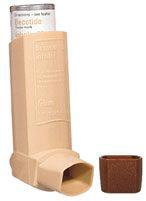



If you have asthma your airways are extra sensitive.
When you come into contact with something you are allergic to, or something that irritates your airways (a trigger), your airways will become narrower, making it harder to breathe.
The lining becomes inflamed and swollen. Sticky mucous if often produced. The muscles around the airways tighten.
Controlling asthma requires the correct medication/inhalers and where possible managing or avoiding triggers. Treatment of asthma needs to focus on controlling the inflammation in the airways, and daily preventer/ control inhalers should be taken and are the most important inhalers used to keep asthma under control. Used on a daily basis these inhalers can reduce asthma symptoms and eliminate asthma flare-ups.
important that you take your controller every to keep your asthma away!
Controller inhalers stop your airways from being so sensitive. They may take 7 to 10 days to be effective.
The protective effect builds up over several weeks.
Relief inhalers are taken to relieve asthma symptoms (cough, wheeze & tight chest).
They quickly relax the muscles surrounding the narrowed airways (within 5-10 minutes), making it easier to breathe again.
If you need your reliever inhaler more than twice a week, talk to your doctor - you may need a controller inhaler.
This is because reliever inhalers do not reduce the swelling in your airways.
If you are using a relief inhaler more than twice a week you are not treating your asthma and may be making it worse.
Everyone with asthma should have an annual review with their GP or paediatrician, for review of their medications, inhaler technique checks and update of written asthma action plan.
If you have any questions or would like to see the asthma nurse for an asthma review please contact Open Airways 232 0264 or email nurse@ openairways.com
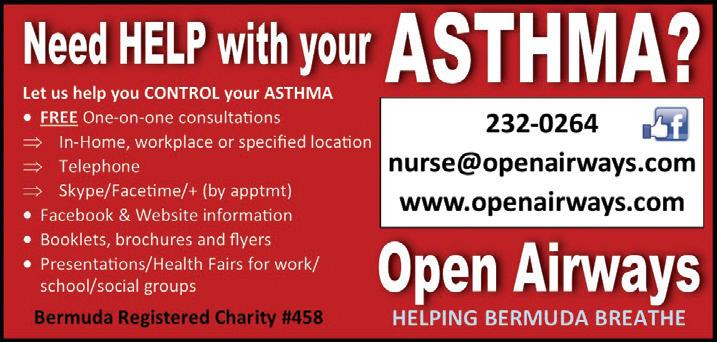
To learn more about asthma take our online asthma course “Supporting Children’s Health”. This free online course is aimed at anyone who has asthma or who works with children. Please visit www.openairways to access the course.

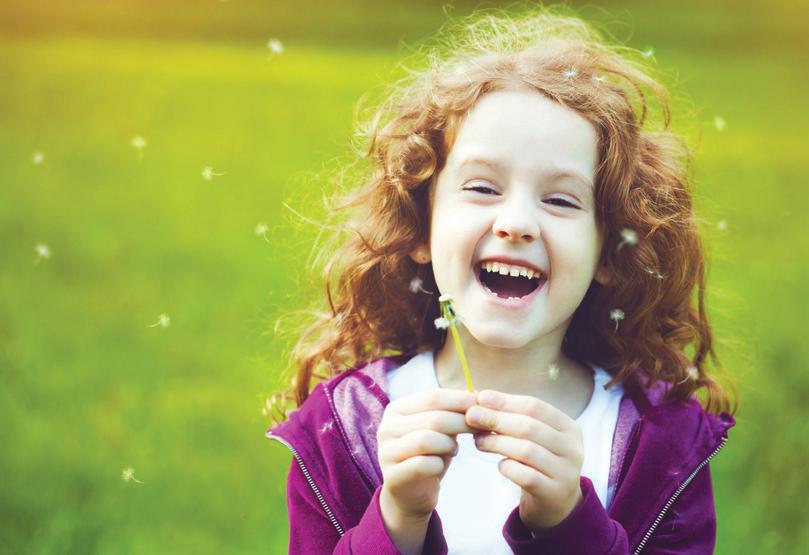
As the mother of a busy two-year-old, the thought of putting myself first, let alone saving for my own retirement, is far-fetched, to say the least. Between nursery school fees, extra-curricular activities, putting a roof over her head and healthy food in her body―saving for myself? Yeah right!
I remember the first time that we traveled together overseas. It was right before I was due to return to work after being on maternity leave. I was so excited to shop for my baby girl and to pick up a few things for myself to spruce up my “new mom” wardrobe. If you have a daughter, then you know just how much fun (and expensive) shopping for her can be. Between the bright
colors and beautiful prints, it’s very easy to overspend. We won’t even begin to talk about the matching “mommy & me” outfits (I am absolutely “that” mom). After a successful day one (or so I thought), we arrived back at our hotel when I realized that the only thing I had purchased for myself was lip gloss. Before becoming a mom, I enjoyed traveling at least twice per year just to shop for myself―my, has life changed.
I was reading an article published in 2018 by The Peak, which states that 72% of parents admit to putting their children’s needs before their own. But that’s what you’re supposed to do, right? Many parents put things such as saving for their own retirement on the back burner and instead focus on
opening a savings account or starting a college fund for their new bundle of joy. While these are both important to ensure that you are giving your children the best possible future, what about planning for your own? It’s easy to get absorbed in saving for your child, but if your own financial retirement needs are not made a priority, you could end up becoming a financial burden to your loved ones.
There is nothing quite like becoming a parent that makes you focus on the here and now, cherishing every single second, but now more than ever you should be planning for your own comfortable retirement. You spend

nine months preparing for the arrival of your new family member, and then once they have made their entrance into the world, it’s almost like you blink and they are off to college. One minute you are planning birthday parties and playdates and then before you know it they are planning a party to celebrate your retirement.
Your lifestyle, income and financial obligations are a few of the factors that affect your ability to save, and not just for retirement. With the perpetual rise in essentials such as basic utilities and groceries, saving may seem like an unobtainable goal, but being consistent and setting aside an amount that works within your budget is essential in affording you a more comfortable retirement.
If you own your own home free and clear once you retire, then you are fortunate. Imagine trying to afford a rent or mortgage payment while on a much more fixed income than what you are used to. Factor in the basics such as utilities and groceries. How about affording that vacation with the rest of your family or treating yourself, because after all, you are living in your golden years, right? Think about how hard you
work for your money now. Wouldn’t it be great to enjoy that money when you no longer have to work?
As for myself, I have made it a priority to set aside a little each month to build up my own nest egg. At the end of each month when I sit down to pay my bills, I pay the most important one first: myself. All things considered, this can sometimes be easier said than done. However, with my experience working in the insurance industry and being exposed to different pension products, I know firsthand the importance of saving as much as possible for the future. While the pension plan that is available to you through your employer is a fantastic benefit, having a separate plan for retirement allows you the flexibility to access additional funds when you might just need them most.

Hours
Monday - Friday 1-5pm Saturday 10-5pm
It’s best to call in advance to arrange an appointment.
14 Tribe Road No#2 Warwick Phone: 441 703-2832
Website:

designerballoonstudio.com



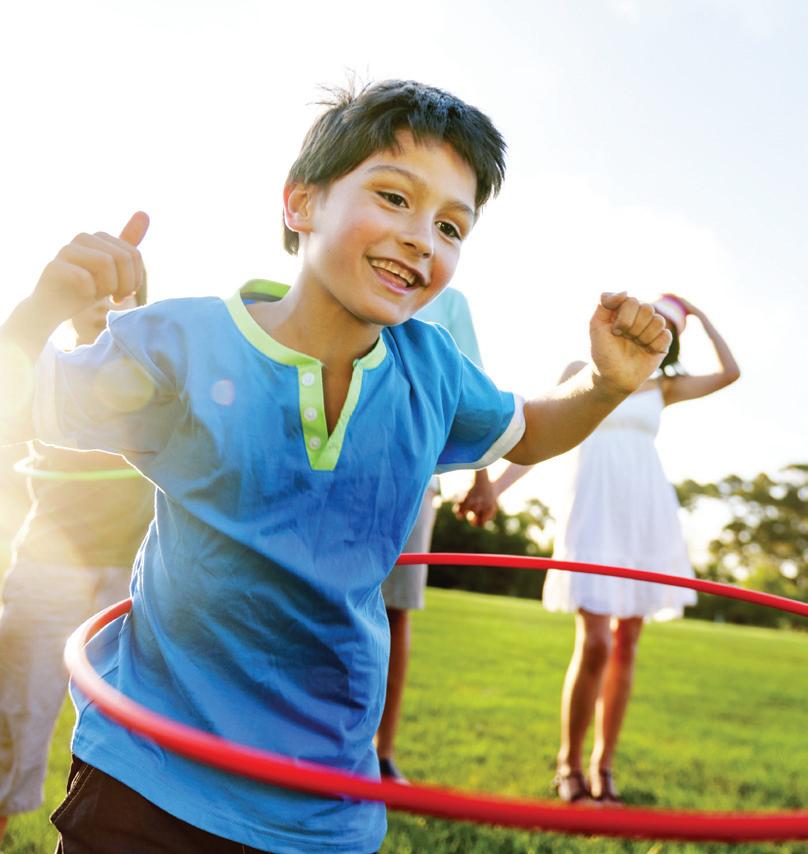
The rate of mental health issues occurring in children is on the rise. Children are experiencing a higher prevalence of ADHD, Anxiety, Depression, Mood, and other behavioral difficulties. When my own daughter was five years old, she would experience outbursts that would be disproportionate to the circumstance. The start of a new school was a tipping point for her as I observed her transition from being overjoyed with excitement to displaying emotional lability and moodiness. On her bad days, a simple request or a slight disappointment would result in a loud emotional
outpouring. The mere mention of the name of a deceased Uncle would lead to a crying fit. I began to recognize a pattern between my daughter’s behavior and the foods that she was eating. There were also other things that contributed to her having more good days than bad, like the amount and quality of her sleep and her diet. I learned that to optimize your child’s mental health, there are many factors to consider and here are my helpful solutions for your daily routine.
BY OCEANROCK WELLNESS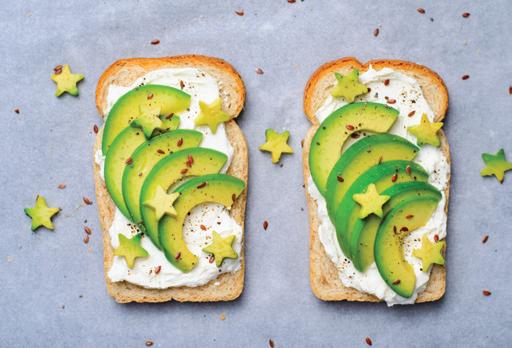
Feed your children a healthy balanced diet that also lends itself to a calm state of mind. Root vegetables contain vital grounding and soothing properties that ease the effects of stress-related hormones. Foods rich in antioxidants and omega-3 fatty acids will also support a healthy mood. Omega 3 fatty acids are vital for brain function and regulate hormone release. Wild salmon, walnuts, flaxseed, and chia seeds are great examples.
Many of these foods fall into the category of Superfoods. These are simply foods that contain higher levels of beneficial nutrients, minerals, and vitamins, and therefore, represent an excellent source of anxiety-reducing nutrients.
B vitamins play a role in producing happyhormones. Eating foods rich in these vitamins will assist with the relief of anxiety. Green vegetables such as asparagus, spinach, and avocados are foods you can include in your diet to combat high levels of stress hormones, such as cortisol.
Herbs such as chamomile, lavender and peppermint have specific healing qualities, and consuming these leaves as tea,
can have immediate effects on anxiety. The menthol base in peppermint is a natural muscle relaxant, priming the body for sleep.
The environment that surrounds our children must promote a healthy, positive attitude towards themselves and their relationships. Lighter, brighter, cleaner, and more open spaces improve a child’s mood.
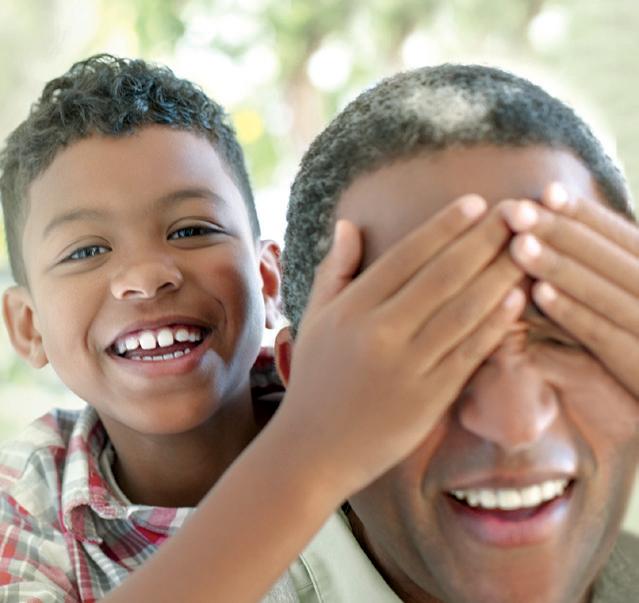
People spend an increasing amount of time indoors, which does not support a healthy mindset. I recommend that you encourage your child(ren) to spend more time in nature to prevent and combat stress and anxiety.

Essential oils contain tiny, aromatic molecules that can pass through the blood/brain barrier immediately and have a positive effect on mood! My first choice is lavender. It can be used by rubbing it directly onto the body, adding it to the shower or a diffuser. It should be noted that most oils require diluting before using them on the skin. You can add drops of essential oil to any ‘carrier oil’, such as olive oil, jojoba oil, or fractionated coconut oil.
Exercise is one of the most invigorating and effective ways to combat periods of anxiety, stress, or depression. It produces endorphins that have similar effects to taking medication. A short ten-minute walk is scientifically proven to elevate moods. Children who are more physically active show lower instances of anxiety and depression.
Whether it is sports, running, climbing, dancing, swimming, or hiking, the effects of moving the body and engaging in physical exercise are unlike anything else for the relief of stress and anxiety. The best activity for your child is one they love!

Yoga and meditation are also hugely beneficial in combating symptoms of anxiety and stress. By promoting a sense of ease and wellbeing within our own bodies and minds, it gives us tools to use against the onset of stress. Yoga and meditation classes can be geared towards children of all ages. Be sure to look for a class that focuses on the mindful breathing techniques along with the physical fitness aspect.
Children need to feel supported and it often takes more than one change to bring about effective results. Consistency and communication are also key, so stick to a routine and get the whole family involved. For a detailed printable version of these tips, visit www.oceanrockwellnss.com/wellmind.
And your plan. At BF&M, our goal is to help you live the best life you can with the money you have. Of course we’re focused on making your money work as well as it can. But we don’t just look at your return on investment; we look at your return on life. That means financial planning that works for you now and for the future, so you can go on loving life—the way it should be.
Looking for a way to light up your child’s face this holiday season? You don’t want to miss the Festival of Lights, powered by BELCO. Taking place on Saturday nights from 6pm to 9pm at the Botanical Gardens, Festival of Lights will run from November 30th until December 21st.
After months of planning and weeks of preparation, Botanical Gardens will be transformed into an unforgettable winter wonderland. BELCO is supplying the lights and electricity to bring this magical experience to life.
Tens of thousands flocked to see BELCO’s inaugural Festival of Lights in 2017. After a brief hiatus, the popular event is back and better than ever, with new designs, a new layout and a new focus.
Although there is no entry fee to enjoy Festival of Lights, BELCO will be collecting donations at the event for this year’s selected charity, WindReach.
WindReach offers therapeutic, educational and recreational experiences for people with varying physical and intellectual abilities. WindReach has

helped thousands of individuals living with special needs since opening in 1999. Today, it is a fully-accessible 4-acre facility that features a multi-purpose activity centre, a petting zoo, a therapeutic riding centre, newly redesigned, accessible playground, and a renovated cottage as a hub for their expanding services geared specifically for older adults. On average, 200 participants benefit from the programmes at WindReach on a weekly basis.
Fund Development Manager for WindReach, Tammalita Joseph, stated, “We are so grateful for this support from BELCO and we hope that the community will donate generously to assist our work at WindReach. The programmes at WindReach are unique and critical for members of our community who would otherwise not have these resources.”
In addition to collecting donations, BELCO will sell food and beverages at the event, with all proceeds going directly to WindReach.
“BELCO is very excited to support WindReach as they continue to serve those members of our community with special needs and varying abilities,” said Mr. Pimentel. “We encourage everyone to come out with their families and friends to experience the beauty and magic of The Festival of Lights.”
For more information about Festival of Lights, please visit belco.bm.


January 14
Happy 4th Birthday! Happy Birthday from Mom, Dad & Family
December 13
Happy Birthday with Love Daddy and Mommy
September 10 Happy Birthday!
November 2
Happy 4th Birthday Kamori! Love Mom and Dad



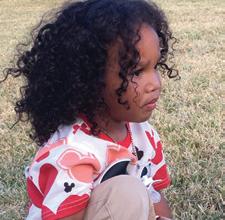
October 8
Happy Birthday!
December 21
Happy birthday to our little superstar. Lots of love, Daddy, Mummy & Tita Cathy xx

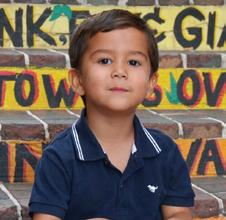
November 29
Happy Birthday Gabe! Love from Dad, Mom, Sam, Cory and of course Jonny & Teddy. We love you!
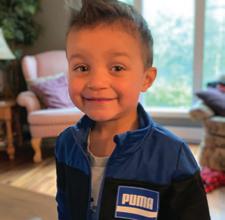
Zolé
Nov 28
Happy 9th Birthday Zolé! Love from Mom & Keily

Gabriella Simons
December 26
Happy birthday Gabriella. YOU ARE A STAR!! XXOO, Mom, Dad, Gramma Junie and Grampa
Macray
January 9
Happy 7th Birthday! Mommy and Daddy Love you Always and Forever
Da-Xia Gibbons
December 27 Happy 8th
Birthday to our Genuine Princess! You are growing so beautifully. Continue to be yourself. Love Mommy, Daddy + family



Sheiyah Caines-Douglas
December 8
Alaia Simmons
November 1
Jeremiah Caines-Douglas
January 5
Happy 4th Birthday Alaia! Love Mommy, Daddy and Family xo
Happy 6th birthday Jeremiah! You are growing into a very sweet and handsome boy! Mommy, Daddy and Sheiyah love you very much!
Amori Simons
December 11
Happy 7th Birthday to our adventurous, intelligent and loving footballer son Amori. Love Always, Your Family.
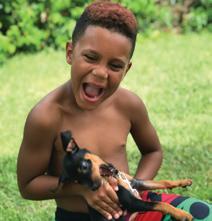
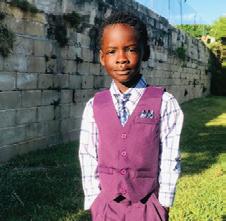
Henysi DeSilva
January 27
Happy 2nd Birthday Henysi Love Godma Wonnae’, Da-Xia,Rome & Godma Anshawna Love you boo
Happy 7th birthday to our beautiful Princess! Mommy, Daddy and Jeremiah love you very much and wish you the best birthday yet! Send
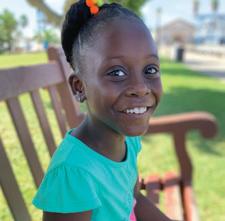
Ta-Jaye Simons
December 10
Happy 4th Birthday to our inquisitive and athletic son Ta-Jaye. Love Always, Your Family
